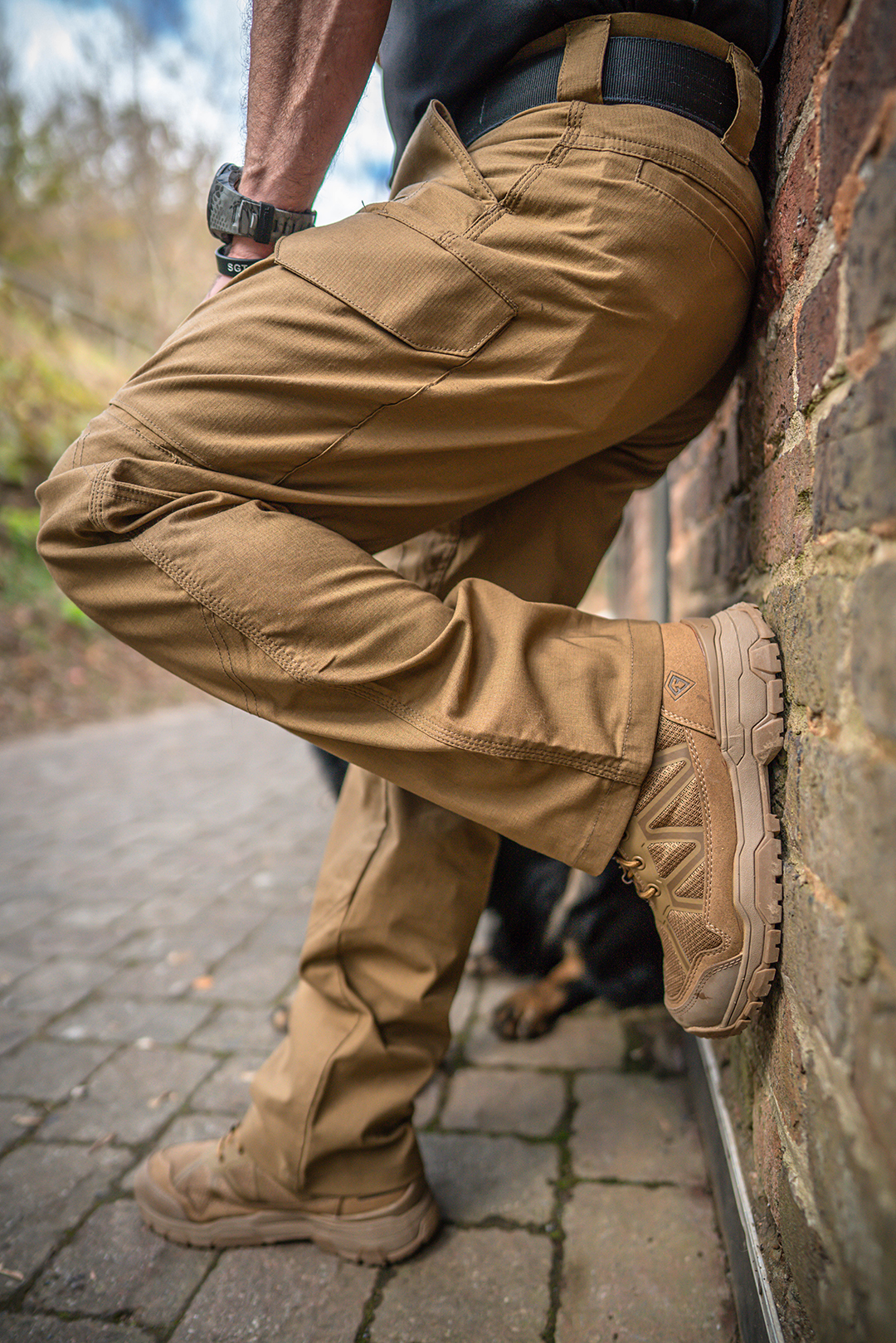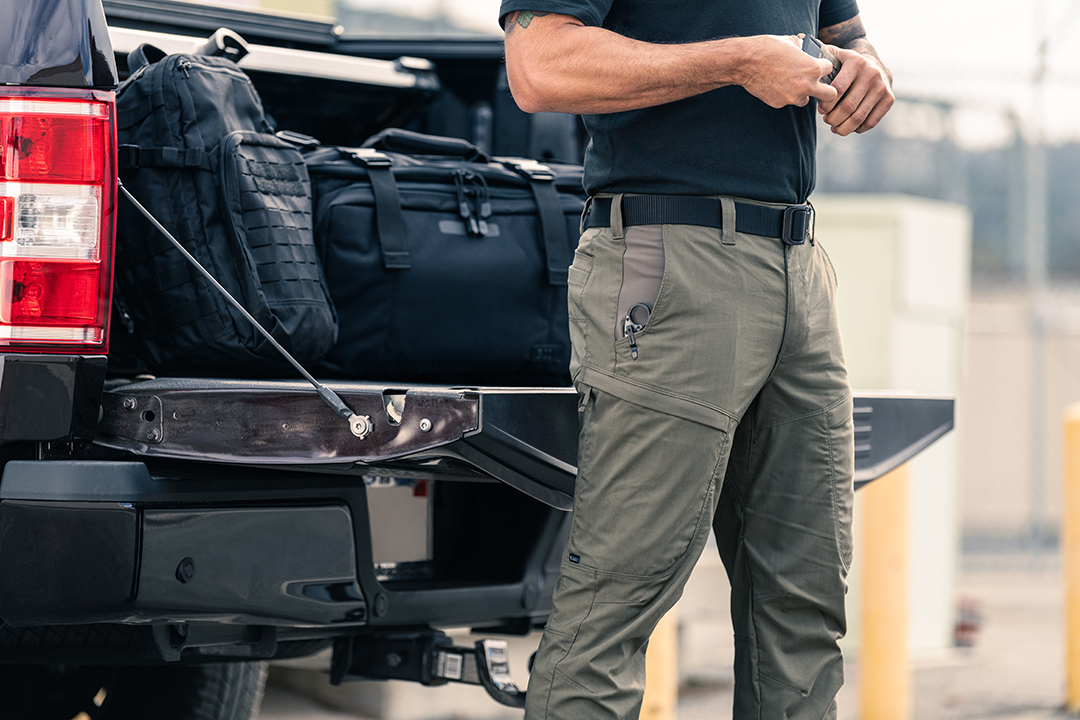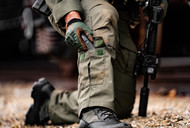TACTICAL PANTS: THE BEST CHOICE FOR DUTY-SPECIFIC WORKWEAR
Posted by Curtis Blue Line on Nov 2nd 2022
Are you shopping for tactical pants? Searching for new tactical pant options?
If you work in law enforcement, you’re probably well aware of what tactical pants are and why they are so popular.
Over the last ten to fifteen years, tactical pants have become a foundational component of uniforms and workwear, not just within law enforcement, but across all agencies involved in public safety, first response, the military and even in civilian life.
In fact, most men and women who wear tactical pants will tell you they are the best choice for duty-specific workwear.
Unlike jeans or basic trousers, tactical pants are specifically designed and constructed to meet the demands of the people who wear them. The basic purpose of these pants is to offer the wearer a tactical or strategic advantage when they need to meet the task at hand.
Tactical pants should allow the wearer to carry more essential gear and carry it more efficiently. The pants should work well under a variety of weather and work conditions. They should provide better versatility and durability than just a regular pair of pants. A good pair of tactical pants should help make jobs easier while providing a high level of functionality and reliability.
While they can be found in a variety of styles and colors from brands like 5.11 Tactical, First Tactical and Vertx, these pants are easily recognizable as ‘tactical pants’ because they generally look very different from traditional pants.

The basic design of tactical pants
Tactical pants are generally identifiable by the number and size of the pockets. But unlike cargo pants which usually feature oversized pockets with minimal focus on actual functionality, tactical pants have been thoughtfully designed.
Pockets are built with intent. The opening of pockets may be angled for quick entry and exit, reducing snagging opportunities and increasing speed – especially important if carrying a weapon or handcuffs. Pockets may use velcro, zippers or buttons to contain what’s inside. Velcro pockets offer faster access, while zippered pockets provide a more secured pocket. Some pockets may have a low profile, while some may be completely hidden.
Durability is key as well. Most tactical pants are made with a polyester and cotton blend, allowing for a mix of comfort along with strength and resilience so that they hold up under everyday wear across a variety of uses. Wearers can count on these pants to bend and stretch while being resistant to rips, tears and stains.
Often, components of these pants like pockets and belt loops have reinforced stitching. Fabrics are specially designed to be reinforced, yet flexible. And extra support is generally built in around the knees, crotch and waist.
Choosing the right style of tactical pant is important and should align with the type of work being done. Someone working in law enforcement will have different wants and requirements than someone working as an EMT, in Search and Rescue or while off-duty.
It is important to remember that tactical pants are tools, and it is always best to choose the right tool for the job. Choosing the perfect pair of tactical pants starts with understanding who is wearing them and under what conditions they will be used.

A quick look at the history of tactical pants
The styles now associated with tactical pants were first developed for military uses, but they have since found their way into many different fields and industries. Today, tactical pants are worn by law enforcement officers, firefighters, EMTs, disaster response teams, hikers, hunters, mountain climbers, and virtually anyone else who needs practical, durable clothing designed for carrying needed items at work or in the field.
Tactical pants as we know them today have their history in British and American military uniforms of the 1930s and 1940s. These were designed for officers who needed to carry maps, compasses, watches, and other tools in the field, and their multiple-pocket design and rugged durability represented a breakthrough in battlefield uniforms that would soon spread throughout the armed forces of other nations.
During World War II, the U.S. military issued tactical designed pants with multiple oversized pockets to paratroopers and other field operatives who needed to be able to easily carry tools, rations, and other supplies as they completed their missions.
Paratroopers had to literally hit the ground running, and well-equipped tactical pants often meant that they could carry essential gear and other field items in their pockets instead of wearing bulky backpacks.
Interestingly however, tactical pants became the “go-to” pants for law enforcement because of early connections between rock climbers and people working at the Federal Bureau of Investigations (FBI) training academy in Quantico, Virginia. As the story goes, a person working in customer service for Royal Robbins, an outdoor clothing manufacturer in California who specialized in rock climbing apparel, married an FBI agent.
That agent, who really liked his rock-climbing pants and thought they would be comfortable and useful while performing his duties, brought them to Quantico.
They were an instant hit. As more agents discovered and used these pants while on duty, demand for them increased and eventually that demand filtered down to other public safety and law enforcement agencies.
Over the coming decades, tactical pants evolved and improved, becoming the preferred work pants for men and women who relied on quality apparel while at work or off-duty.

